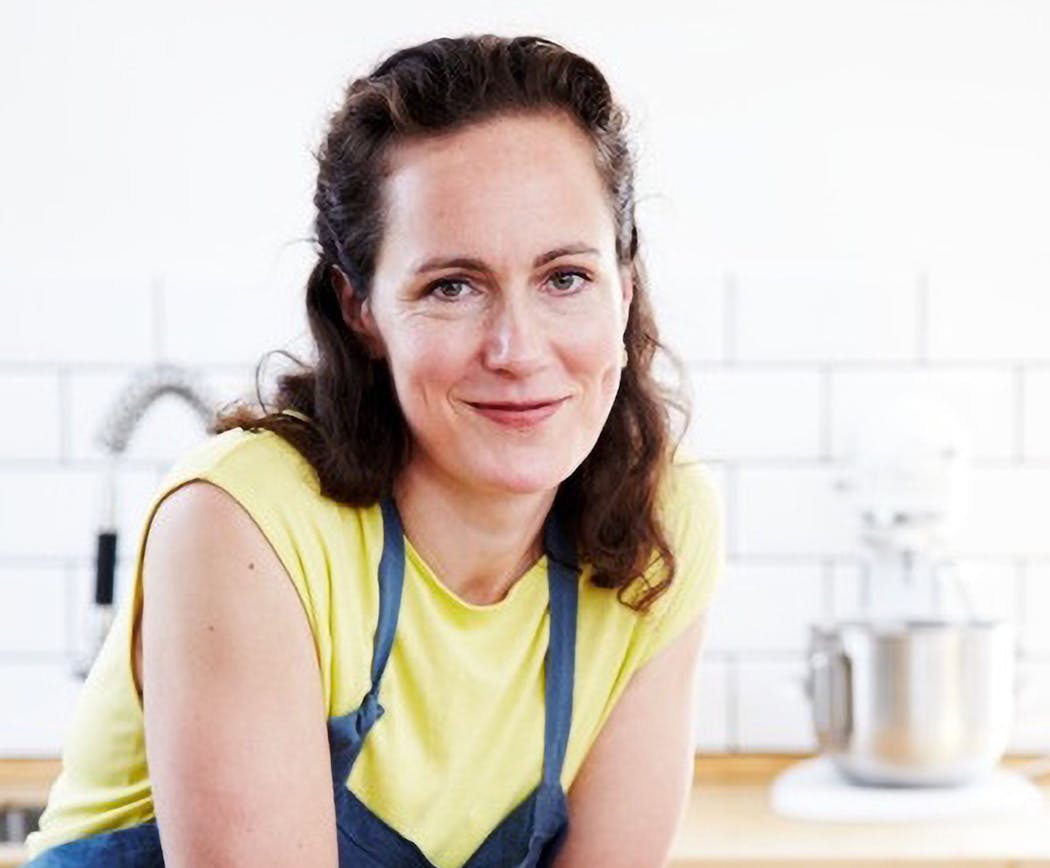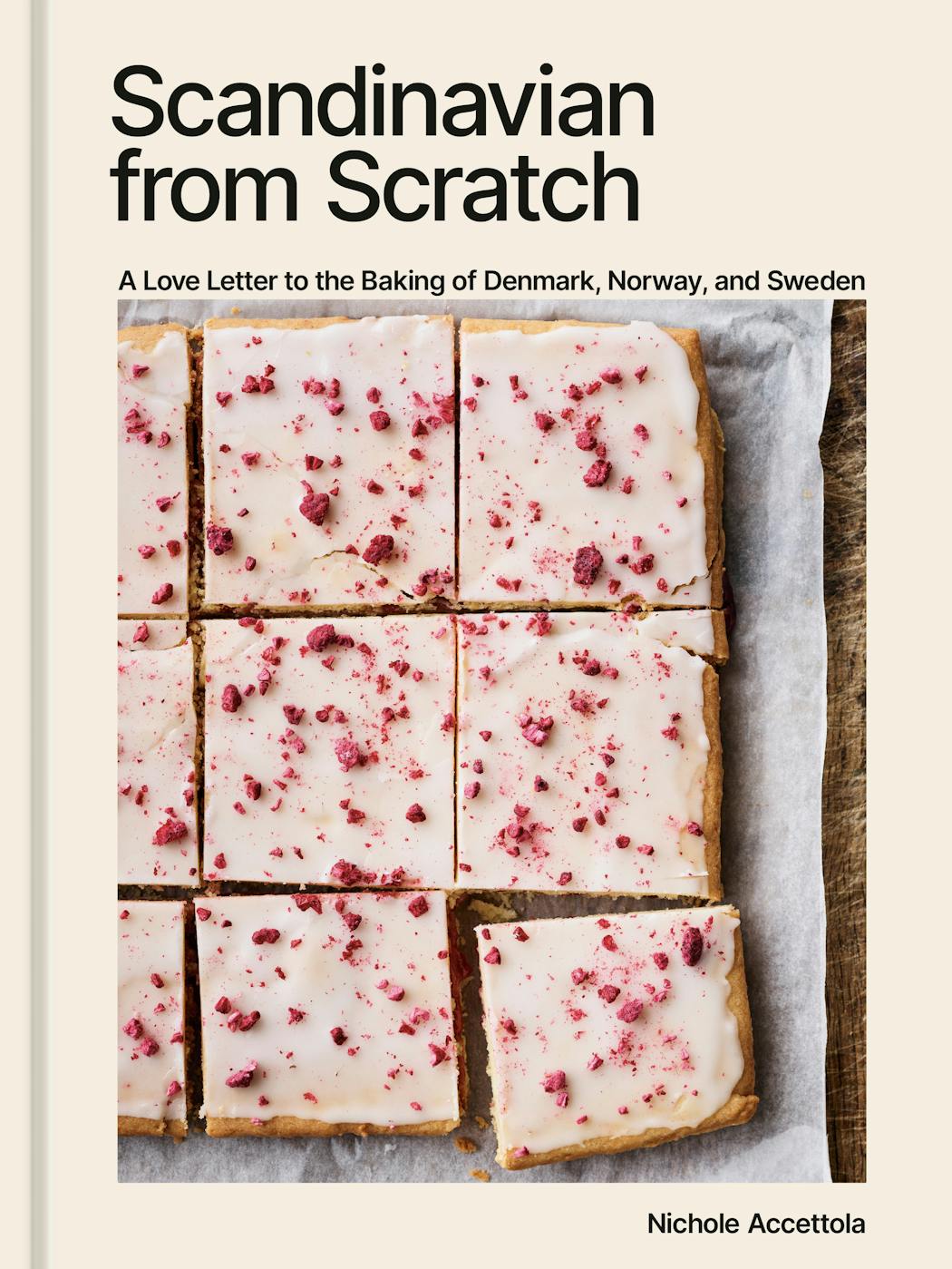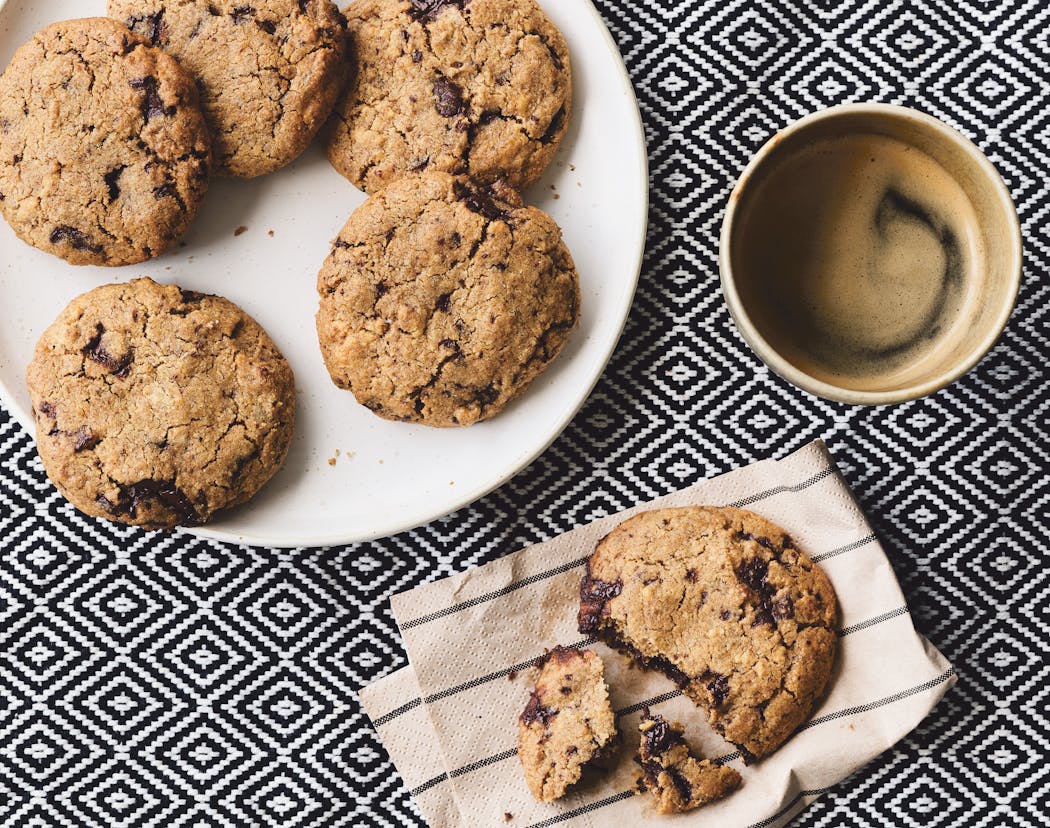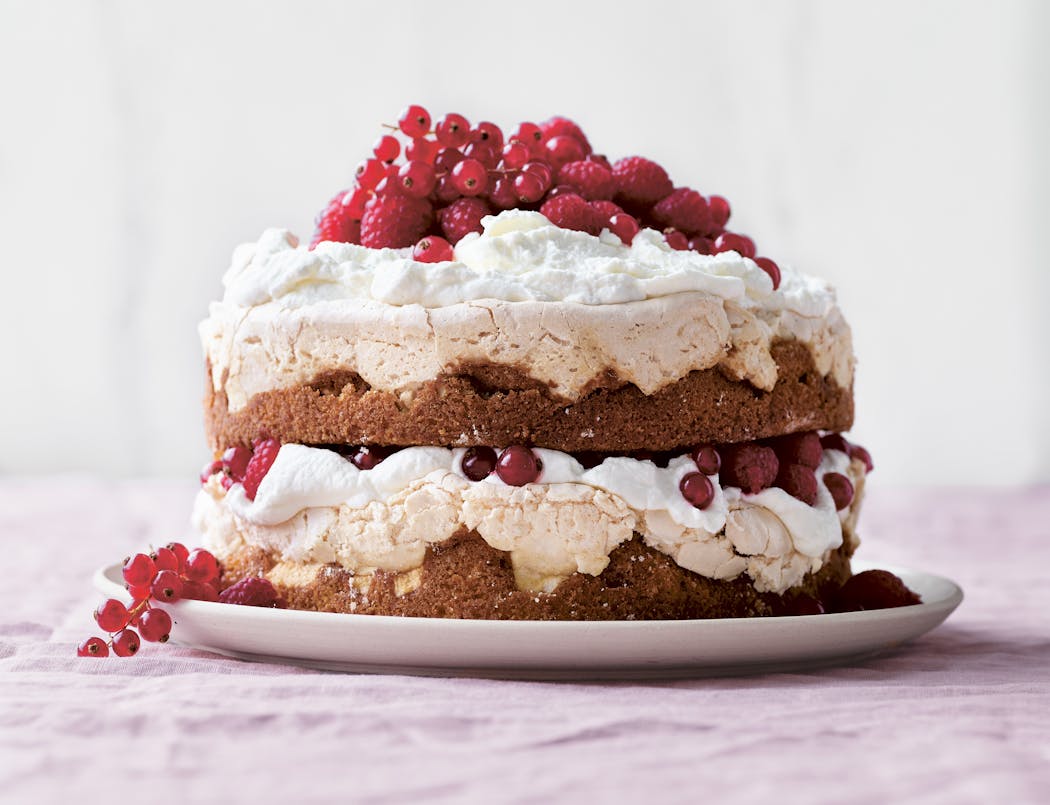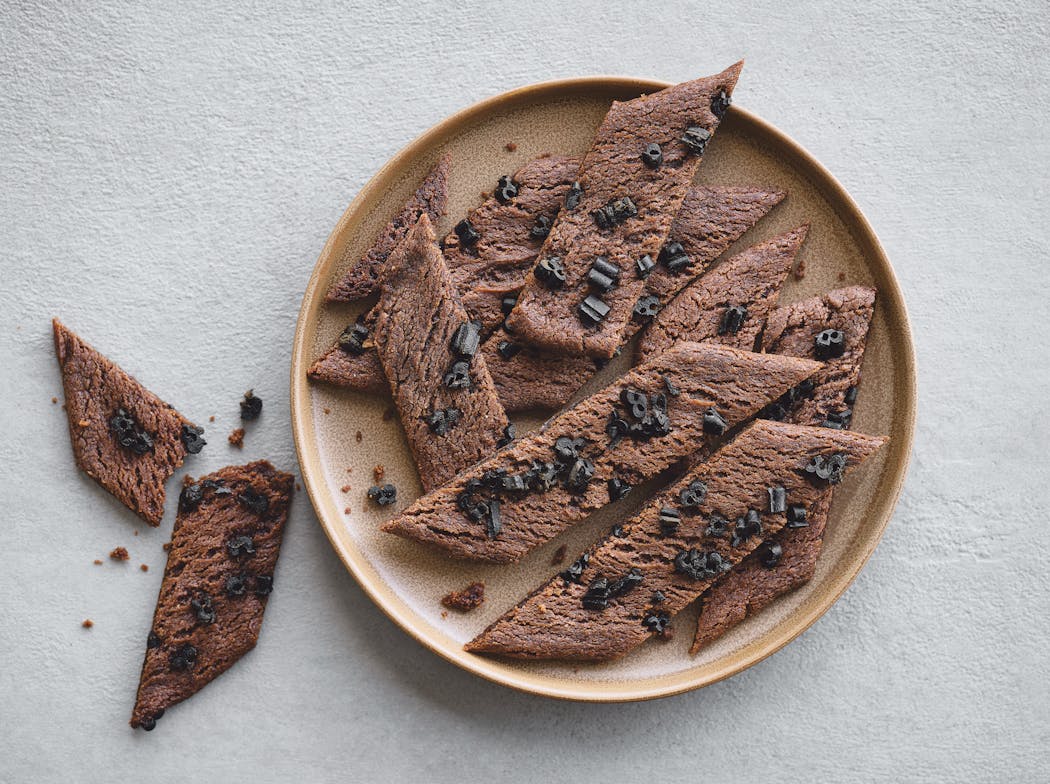Chef Nichole Accettola is doing her homework ahead of her first visit to Minnesota.
Accettola, who owns the popular Scandinavian bakery-cafe Kantine in San Francisco, queried customers via newsletter about what to do in Minneapolis while promoting her new book, "Scandinavian From Scratch: A Love Letter to the Baking of Denmark, Norway and Sweden."
"I'm expecting it to be very cold," she said. "And I'm looking forward to a Juicy Lucy, I guess? Everybody's saying I have to have one. And I'm really looking forward to going to the birthplace of Prince, because I'm a huge Prince fan."
Accettola even had her own brush with Prince involving one of his famous after-parties, which was catered by the Bay Area restaurant where she worked at the time.
"I'd never seen him live, but I was able to come into this after-party and it was the wildest thing," she said. "All my co-workers had to go home because there was brunch service the following day. So I was standing there alone, pinching myself. 'Is this real? Is he really just 15 feet away from me?' When my husband woke up the next morning, I said, 'You're never gonna believe what happened last night.' "
Yes, Accettola's journey has been interesting, and that's just not Minnesota-speak.
She grew up in Ohio, where she forged a friendship with a Danish exchange student. She spent the summer after high school in Copenhagen and became enamored of both the Danish way of life and their baked goods. Accettola returned to the United States for culinary school and eventually landed in Boston, where she spent a decade working with culinary luminaries like Todd English and Barbara Lynch.
The long restaurant hours started taking a toll, and the Scandinavian lifestyle beckoned. So did love. Accettola returned to Copenhagen, and soon married her longtime Danish partner. They spent 16 years in Denmark, where she held a variety of culinary positions while they were raising three children. Wanting to experience the United States as a family, an extended vacation in San Francisco was next.
"At first we were only gonna stay for about six months, but those first months went so quick," she said. They decided to stay. "Then I said, well, we need some jobs. Between that and let's open a restaurant, I don't know what happened. But, if we're going to do something, now's the time to do it."
In 2018, they opened Kantine, and that's where we caught up with Accettola. She spoke by phone about her favorite recipes, what baking technique she has yet to master and her love of Tater Tots. The conversation has been edited for length and clarity.
Q: In San Francisco, you started making and selling Scandinavian rye bread at the farmers market. Is that what spurred you to open Kantine?
A: It was definitely the rye bread and missing the rye bread. People really liked it, even people who didn't have any references to Scandinavia. They liked it because it was a wholesome bread, dark and seedy — different than your run-of-the mill bread. It caught on flavor-wise, but then people didn't really know how to use it. I wanted to show people what casual Scandinavian food can look like. I love the thought behind open-faced sandwich. Not only are there great flavors, but there's also the textures and the way that it's presented. I just think that they are small pieces of art.
Q: How has Kantine changed since you opened it?
A: It has changed a lot. Kantine has always been a reflection of me and my culinary journey. When we first opened, we were a brunch place and had a few pastries because we're a daytime spot and felt obligated to offer that. But over time, I missed some of the pastries that we loved so much living in Copenhagen. We started expanding our bakery offerings, and people were really enthusiastic. Then, entering into the pandemic, it went crazy. Our bakery production was over the top and it really got me hooked on what we could do. Since that time, and throughout the writing in the book, I've shifted my interest more toward baking and less toward the savory kitchen. I love that I'm able to form the business around the things that I am passionate about.
Q: Was writing a cookbook something you always wanted to do?
A: I always dabbled in food writing. I love writing, but unfortunately I'm not very efficient with it. So that was great to have Malena [Watrous, her co-writer]. I don't know if I was thinking about a cookbook, but I love the idea of having a time capsule or a time stamp during this window of two years where we're able to pick and choose things that we think are exciting, that we want to share with other people — things that really pull on our heartstrings in some way and tell a story.
Q: What's your favorite recipe in the book?
A: I absolutely love and will never get tired of the Royal Party Cake. It has a layer of cake batter, and directly on top of that you put a layer of meringue and it all gets baked at once. I'm not a crazy meringue person, but I love that idea. I love the contrast of flavors and textures. And you layer it up with unsweetened whipped cream — the sweetness of the meringue, and then the not-so-sweet of the whipped cream and fresh berries — you can vary it depending on what time of year it is and what you have on hand. It makes my mouth water just talking about it.
Q: Any tips for those new to Scandinavian baking?
A: The recipes in the book are arranged from easiest to more difficult in each chapter. So start with the cookies in the beginning of the book, especially the slices. It's a very simple batter to put together and you roll it into a log and bake the log and then cut it afterward. They're just delicious, so unassuming and simple looking, but they really are so good. I highly recommend the black licorice one. Even people who normally don't like licorice like this one because there's some star anise in there and molasses — it's not just your straight black Twizzlers.
Q: What is your favorite food to eat or prepare?
A: I don't know if I should mention it, but I have a real weakness for Tater Tots. And I don't know why. I don't make them and don't really buy them, but there's a really good burger place here where they have such good Tater Tots.
And, being in California, we're really lucky that we have a farmers market almost every day of the week. I love going to a farmers market and getting a lot of really fresh vegetables, going home and making a meal out of different small plates of vegetables and some good bread. I think that would be my dream meal.
Q: What's your favorite ingredient to cook with?
A: I love to cook with cardamom. Is that too predictable? It's so good. Before we opened Kantine, I was a chef and less of a baker, so I had never been exposed to decorticated cardamom, where you're grinding the seeds yourself right before baking. That has been a complete game-changer. I grew up in rural Ohio, where my mom had spices that stood for my entire childhood. She was never about freshness. It was just like, 'Oh, yeah, we've got that,' even if it was 10 years old.
Q: What's your favorite kitchen tool?
A: I had the pleasure of being in Sweden in 2019, where I did a stage at [Magnus Nilsson's] Fäviken in the bakery department. One day the baker took me to this little shed where they had a wood-burning stove and we made Tunnbröd, Swedish flatbread, and we had different rolling pins to roll it out. Yesterday, I just received a new rolling pin — it has lines on it; they call it a corrugated rolling pin. That's the one I've been playing with now.
Q: Fäviken must have been a fantastic experience.
A: Oh, my gosh, it was. I was there the summer before they were closing. It was just amazing that I was able to witness that place. I'll never forget — there was one night where I stayed and watched service happen in the kitchen and it was just amazing. Not only the food that was going out, but also just like the timing, the clockwork that was going on to get everything orchestrated at the same time. It was a show in itself.
Q: In your book you say you were a fan of cooking shows growing up. Who were your culinary influences?
A: Two come to mind right away. Julia Child, for sure. My mom and I used to act like we were cooking on Julia Child's show in our kitchen. My mom always wanted me to be a chef, so she's also somebody that has really influenced me a lot. I unfortunately lost her a little over a year ago, very suddenly, and she knew that this book was coming and she was so proud.
And Alice Waters has been a huge inspiration to me. The work that I was doing before I moved back to the United States was working to improve both kids' food or any kind of public meal — prisons, hospital food, children's institutions. My specialty was working with children and it was really inspiring to see some of the initiatives she had and what we were also working to have. Things like seasonality, sustainability, making things from scratch, organic when possible. Just quality food and really helping the next generation have some good influences.
Q: Is there something you've always wanted to master as a chef but haven't yet?
A: I think that there's so much to learn about laminated dough, about Danish dough. You can get halfway decent results by not doing a lot of little details, but it's really the little details that matter. For example, the consistency of your butter and the consistency of your dough before you layer them together makes a huge difference in the end product.
Q: So, practice makes perfect?
A: It's hard to gauge when you're first starting out because you're like, 'OK, well, I don't know really what I'm looking for,' but the more times you practice. And I love a resource like YouTube, where you're able watch videos and watch how other people are doing it and what their advice is. I feel like [laminated dough] will never be mastered by me. I can get some very, very good results at home. But I feel like it's just endless — it's so fascinating to me.
Meet the author
Nichole Accettola has two upcoming events at American Swedish Institute:
Baking demo: The chef will talk about her culinary journey and will demonstrate recipes from her book, "Scandinavian from Scratch" while sharing tips and samples. Feb. 22, 6 to 8 p.m.; cost is $30. The event is sold out; call 612-871-4907 to be added to the waitlist.
Book talk: Accettola will discuss her debut book with Myriel chef/owner Karyn Tomlinson. Among the topics: Nichole's baking journey, learning and adapting from Scandinavian food traditions and creating a new cookbook. Feb. 24, 10 to 11:30 a.m.; cost is $15.
It's semlor season, too: ASI's Fika now has Scandinavian semlor pastries daily for a limited time. They often sell out, but you can pre-order a batch of six online ($25) through Tock and pick up from the restaurant counter. A 24-hour notice is required. If you're dining in, look for the semla-inspired cocktail.
For tickets or more information, to go asimn.org. ASI is at 2600 Park Av. S., Mpls.
Rye Chocolate Chunk Cookies
Makes 24 cookies.
In "Scandinavian from Scratch" (Ten Speed Press, 2023), Nichole Accettola writes: "Does anyone really need another chocolate chip cookie recipe? The answer is simple: Yes! This Kantine favorite embodies the essence of a quintessential chocolate chip cookie, with a touch of 'Scandi-ness' thanks to the inclusion of rye flour and almond paste."
• 1 c. (2 sticks) unsalted butter, at room temperature
• 2/3 c. packed light brown sugar
• 3/4 c. granulated sugar
• 1 egg
• 1 1/2 tsp. vanilla extract
• 2/3 c. almond paste
• 2 c. all-purpose flour
• 1 c. rye flour
• 1 tsp. baking soda
• 3/4 tsp. kosher salt
• 10 oz. 63% (or higher) bittersweet chocolate, coarsely chopped
Directions
Line two 13- by 18-inch baking sheets with parchment paper. Arrange two racks in the upper and lower thirds of the oven and preheat the oven to 350 degrees.
In the bowl of a stand mixer fitted with the paddle attachment, beat the butter, brown sugar and granulated sugar on medium until soft and creamy, pausing halfway through to scrape the sides and bottom of the bowl with a rubber spatula, 2 to 3 minutes. Add the egg and vanilla, then beat on medium to fully combine. Add the almond paste and mix for another 2 minutes. (It's OK if the paste isn't entirely integrated into the mixture, as any larger chunks will melt as the cookies bake.)
In a large bowl, whisk together the flour, rye flour, baking soda and salt. Add the flour mixture to the butter mixture and mix on low until all the ingredients are well incorporated. Add in the chocolate chunks and mix until just combined.
Portion the dough into golf ball-size scoops. Flatten each one slightly between your palms and place them on the prepared baking trays, 2 to 3 inches apart.
Bake for 20 to 25 minutes, rotating the baking trays halfway through from top to bottom and front to back, until they are brown at the edges and the tops are still slightly soft. They will continue to firm up after you take them out of the oven. (To ensure that they stay soft and chewy, it's better to underbake them slightly rather than overbake.) Let cool on the baking sheets for 1 to 2 minutes, until they have firmed enough to transfer to a rack to then cool completely. Store the cookies in an airtight container, where they will stay fresh for up to 3 days.
Royal Party Cake
Serves 8 to 10.
The royal party cake is a magnificent study in textural contrasts. Two layers of soft vanilla cake are topped with crunchy walnuts and a chewy layer of meringue, then covered with a cloud of whipped cream. The whole thing is then scattered with fresh berries that have been tossed with elderberry syrup. Bake this cake for a special occasion or make any occasion special by baking this cake! It truly is a party in and of itself. Note: Elderberry syrup, such as the Darbo brand, is available online and through specialty stores such as World Market. From "Scandinavian from Scratch," by Nichole Accettola (Ten Speed Press, 2023).
For the cake:
• 3/4 c. (1 1/2 sticks) unsalted butter, at room temperature, plus more for greasing
• 3/4 c. sugar
• 4 egg yolks, at room temperature
• 1 tsp. vanilla extract
• 1/3 c. whole milk
• 1 c. plus 1 tbsp. all-purpose flour
• 2 tsp. baking powder
• 1/4 tsp. kosher salt
• 4 oz. walnuts, coarsely chopped
For the meringue layer:
• 4 egg whites, at room temperature
• Pinch of kosher salt
• 1 c. sugar
For the whipped cream topping:
• 1 1/2 c. whipping cream
• 1/2 c. sour cream
For the berries:
• 1 c. fresh red currants, or other flavorful fresh berry
• 2 c. fresh raspberries
• 3 tbsp. elderberry syrup
Directions
To prepare the cake: Generously butter two 9-inch cake pans with removable bottoms, line the bottoms with parchment paper, and butter the parchment paper. This cake tends to stick, so be liberal with the butter. Preheat the oven to 350 degrees.
In the bowl of a stand mixer fitted with the paddle attachment, beat the butter and sugar on medium until soft and creamy, pausing halfway through to scrape the sides and bottom of the bowl with a rubber spatula, 2 to 3 minutes. Add the egg yolks, one at a time, mixing until each is well incorporated. Then add the vanilla and milk, mixing to combine.
In a small bowl, whisk together the flour, baking powder and salt. Add the flour mixture to the butter mixture and mix on low until the batter is smooth.
Divide the batter evenly between the prepared pans, smoothing it out with a rubber spatula. Sprinkle the nuts evenly over the top of each cake. (Don't be alarmed if that doesn't look like a lot of batter. You will be adding the meringue, which will puff up in the oven.)
To prepare the meringue: Thoroughly wash and dry your mixer bowl. Using the whisk attachment, beat the egg whites and salt on high until soft peaks form. With the mixer running, slowly add the sugar and beat until stiff and glossy, about 5 minutes.
Divide the meringue between the pans, directly over the cake batter and nuts, spreading to cover the surface but stop short of touching the edges of the pans. (Meringue is quite sticky, and not pushing it to the edges of the pan will make it easier to remove the baked cakes.)
Place the two pans on an unlined baking sheet. Bake for 45 to 50 minutes, until the meringue is light brown. After removing the cakes from the oven, put them on a rack to cool to room temperature before unmolding. Line a 13- by 18-inch baking sheet with parchment paper. To unmold each cake, run a knife around the edge of the pan. Carefully invert the cake onto a plate and peel off the parchment paper. Flip the cake back onto its bottom and transfer to the parchment-lined baking sheet. Set aside until ready to use. The cakes can be baked 1 day in advance and assembled before serving.
To prepare the topping: In the bowl of a stand mixer fitted with the whisk attachment or in a large bowl with an electric mixer, whip the cream on medium until soft peaks form. Whisk in the sour cream until just incorporated and set aside.
To prepare the berries: If using currants, remove the delicate stems from all but a few clusters of red currants, reserving those to garnish the top of the cake. Place the stemmed red currants (or other berries) and the raspberries in a large bowl. Pour the elderberry syrup over them and stir them gently so that the fruit is well coated in syrup. This will add a Scandinavian floral note to the berries and bring out their juices.
Place one cake layer on a serving platter, meringue facing up, and top with half of the whipped topping and half of the elderflower-soaked berries and currants. Stack the second layer on top, then spread the top with the remaining whipped topping. Top with the rest of the berries, finishing with the reserved red currants still attached their stems. This cake is best eaten on the day it is assembled.
Black Licorice Slices
Makes 32 cookies.
Note: Black licorice is divisive. It's a popular flavor throughout Scandinavia. Interestingly enough, there aren't a lot of recipes featuring black licorice as a flavor, and these cookies fill that gap. The dough gets its irresistible licorice flavor from three key ingredients: ground star anise, licorice root powder and molasses. I also decorate them with chopped black licorice candy, which magically stays chewy after baking. They've been known to convert people who think they can't stand the stuff. Find licorice root powder in health food stores or online. From "Scandinavian from Scratch," by Nichole Accettola (Ten Speed Press, 2023).
• 4 long ropes (about 2 oz.) sweet black licorice, such as Panda or Wiley Wallaby brands
• 1 cup (2 sticks) unsalted butter, at room temperature
• 1 c. sugar
• 1/3 c. molasses
• 2 1/2 c. all-purpose flour, plus more for dusting
• 1 tsp. baking soda
• 1 tsp. ground star anise (from about 3 pods)
• 1 tsp. licorice root powder (see Note)
• 1 tsp. kosher salt
Directions
Line two 13- by 18-inch baking sheets with parchment paper.
Chop the licorice into pea-sized pieces. Your knife may get sticky and need to be rinsed to keep the licorice from clumping. If it still clumps, pop the licorice into the freezer for a few minutes to stiffen it up. Set aside.
In the bowl of a stand mixer fitted with the paddle attachment, beat the butter, sugar and molasses on medium until soft and creamy, pausing halfway through to scrape the sides and bottom of the bowl with a rubber spatula, about 3 minutes.
In a large bowl, whisk together the flour, baking soda, star anise, licorice root powder and salt. Add the flour mixture to the butter mixture and mix on low until just incorporated. Form the dough into a ball, then divide it into four same-sized portions. If the dough feels too soft to handle, wrap it in parchment or plastic wrap and chill it in the refrigerator for a few minutes. Lightly dust a work surface with flour, then roll each portion into a log about 12 inches long.
Place two logs side by side, at least 3 inches apart, on each of the prepared baking trays. Using your fingertips, flatten the logs to about ½ inch thick and about 1½ inches wide. The dough will continue to spread while baking, so ensure that there is at least 2 inches between the logs.
Evenly disperse the chopped licorice over the surface of each flattened log. Moisten your fingertips and press it in just slightly to keep it from rolling off.
Refrigerate the dough on the baking trays for at least 30 minutes before baking. If you wish to bake them later, cover the trays with plastic wrap and store in the fridge for up to 3 days or in the freezer for up to 2 weeks. They can be baked directly from the freezer, but when doing so increase the baking time by 4 to 6 minutes.
To bake the cookies, arrange two racks in the upper and lower thirds of the oven and preheat the oven to 350 degrees. Bake for 16 to 18 minutes, until darker at the edges, rotating the baking trays halfway through from top to bottom and front to back. The finished cookies should be slightly soft to the touch with a shiny and cracked surface. While they are still hot, cut each log into eight 1½-inch-wide slices on a slight diagonal. Transfer them to a rack to cool. Store the cookies in an airtight container, where they will stay fresh for up to 3 days.
